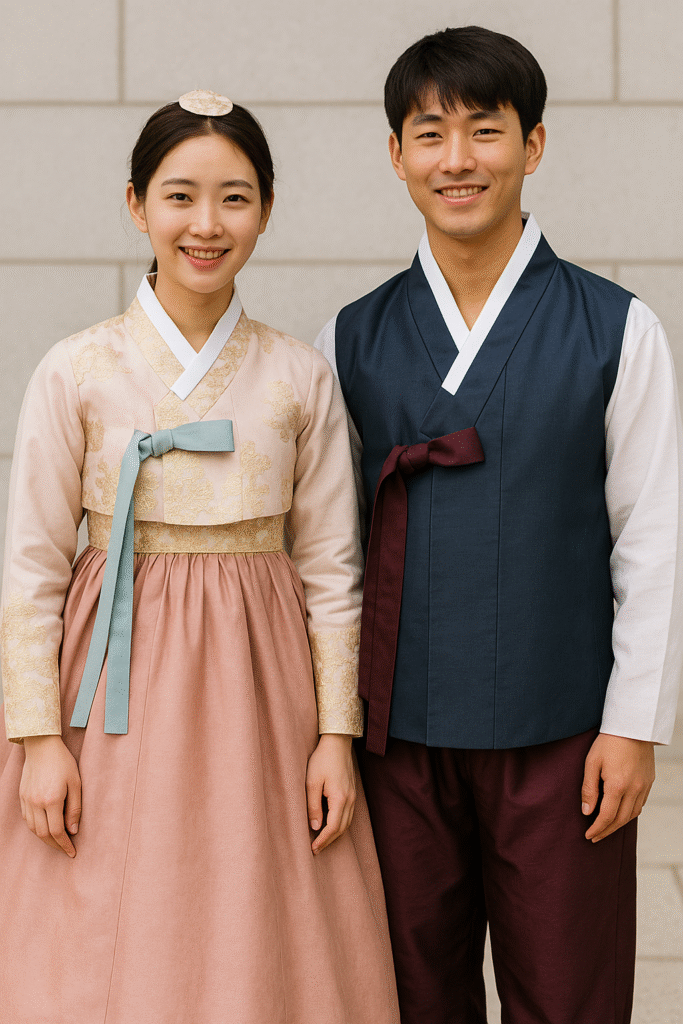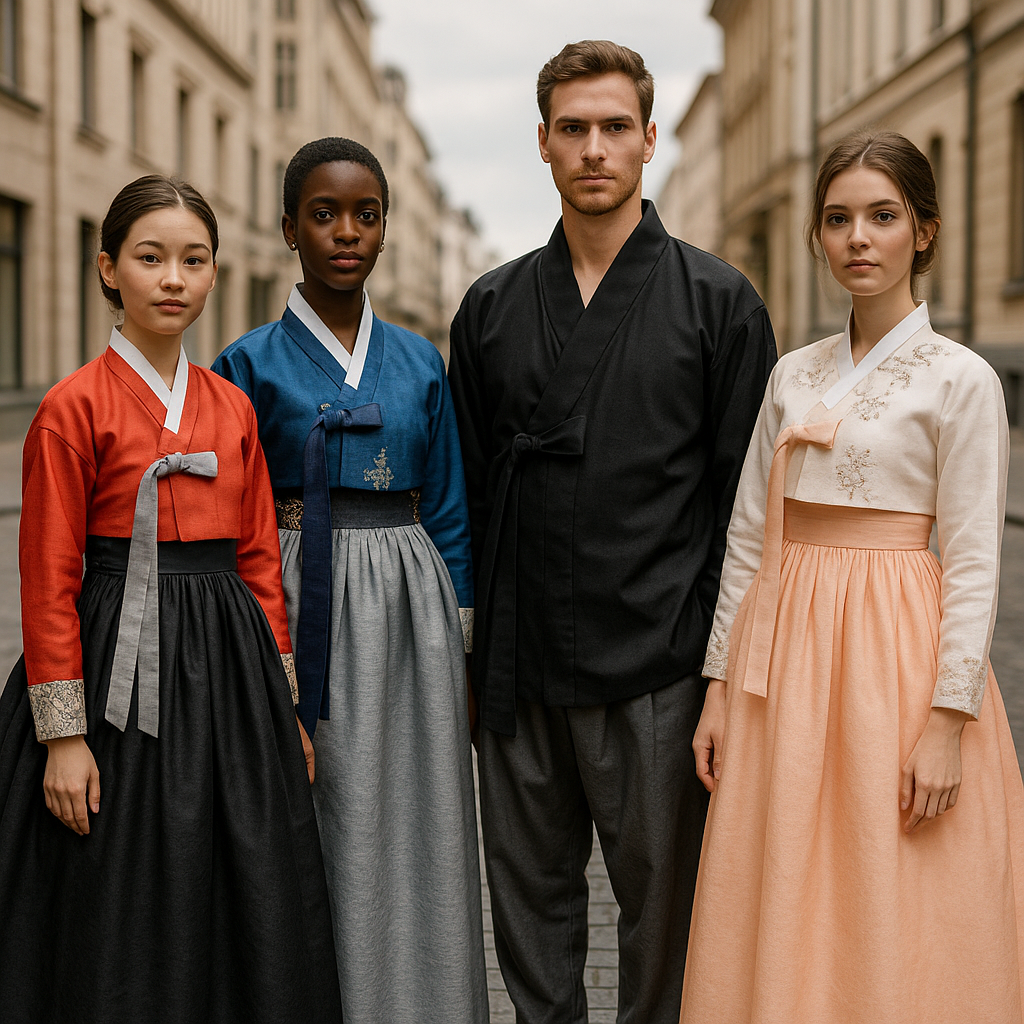By unniepicking@gmail.com / August 16, 2025
Hanbok (한복) is Korea’s traditional clothing, famous for its elegant lines, vibrant colours, and symbolic meaning. Today, many people around the world discover hanbok through Korean dramas (K-dramas). From grand palaces like Gyeongbokgung and Gwanghwamun to trendy districts like Gangnam, Hongdae, and Seongsu, K-dramas showcase hanbok in both traditional and modern ways.

1. Hanbok in Historical K-Dramas
Korean historical dramas (sageuk, 사극) are one of the best ways to experience hanbok on screen. They are often filmed at Gyeongbokgung Palace or near Gwanghwamun Gate, where royal hanbok fits naturally with Korea’s heritage.
Popular Examples:
- Moon Embracing the Sun (해를 품은 달) – royal hanbok with elaborate details.
- Jewel in the Palace (대장금) – everyday hanbok of the Joseon Dynasty.
- Mr. Sunshine – fusion of hanbok and early modern Western fashion.
Through these dramas, international viewers see hanbok not just as clothing, but as a reflection of history and social class.
2. Hanbok in Modern K-Dramas
It’s not only in historical dramas that hanbok appears. Modern K-dramas often reimagine hanbok in stylish ways. Some of these shows are filmed in trendy areas like Gangnam, Hongdae, and Seongsu, where modern hanbok boutiques and fusion fashion thrive.
Examples:
- Goblin (도깨비) – a wedding scene with a modernised hanbok dress.
- Crash Landing on You (사랑의 불시착) – family holiday scenes with hanbok.
- Hotel Del Luna (호텔 델루나) – IU’s stunning fantasy-inspired hanbok.
These scenes prove that hanbok is not just traditional clothing but also a modern fashion statement.
3. Hanbok as a Global Fashion Trend

Thanks to Netflix and other platforms, K-dramas have introduced hanbok to the world. Many international fans search for:
- Where to rent hanbok in Seoul
- K-drama hanbok fashion
- Modern hanbok for photoshoots
Tourists often rent hanbok near Gyeongbokgung and Gwanghwamun, then stroll through Bukchon Hanok Village or take pictures in Hongdae for a unique blend of history and trend. In Gangnam and Seongsu, visitors can even find designers creating modern hanbok styles that mix well with street fashion.
4. Symbolism of Hanbok in Storytelling
In K-dramas, hanbok often carries symbolic meaning:
- Colours: White for purity, red for passion, blue for stability.
- Occasions: Weddings, ancestral rites, royal ceremonies.
- Transformation: Characters changing from plain hanbok to royal garments often symbolise personal growth.
This storytelling element makes hanbok even more memorable for viewers.
5. Where to Experience Hanbok in Seoul
If you’re inspired by K-dramas, Seoul offers many opportunities to try hanbok:
- Hanbok rentals near Gyeongbokgung Palace – walk through the same courtyards you’ve seen in dramas.
- Photo sessions at Gwanghwamun Square – capture hanbok against the iconic city backdrop.
- Hongdae and Seongsu shops – discover modern hanbok designs loved by young Koreans.
- Gangnam studios – book a photoshoot in trendy spaces where hanbok meets modern Seoul culture.
Final Thoughts
K-dramas have transformed hanbok into a global cultural icon. From historical palaces like Gyeongbokgung to the fashionable streets of Gangnam, Hongdae, and Seongsu, hanbok appears everywhere in Korean storytelling.
If you’ve admired hanbok on screen, your next trip to Seoul is the perfect time to try it yourself. Whether in front of Gwanghwamun Gate or in a trendy Hongdae café, hanbok connects Korea’s past with its present — and now, with the world.